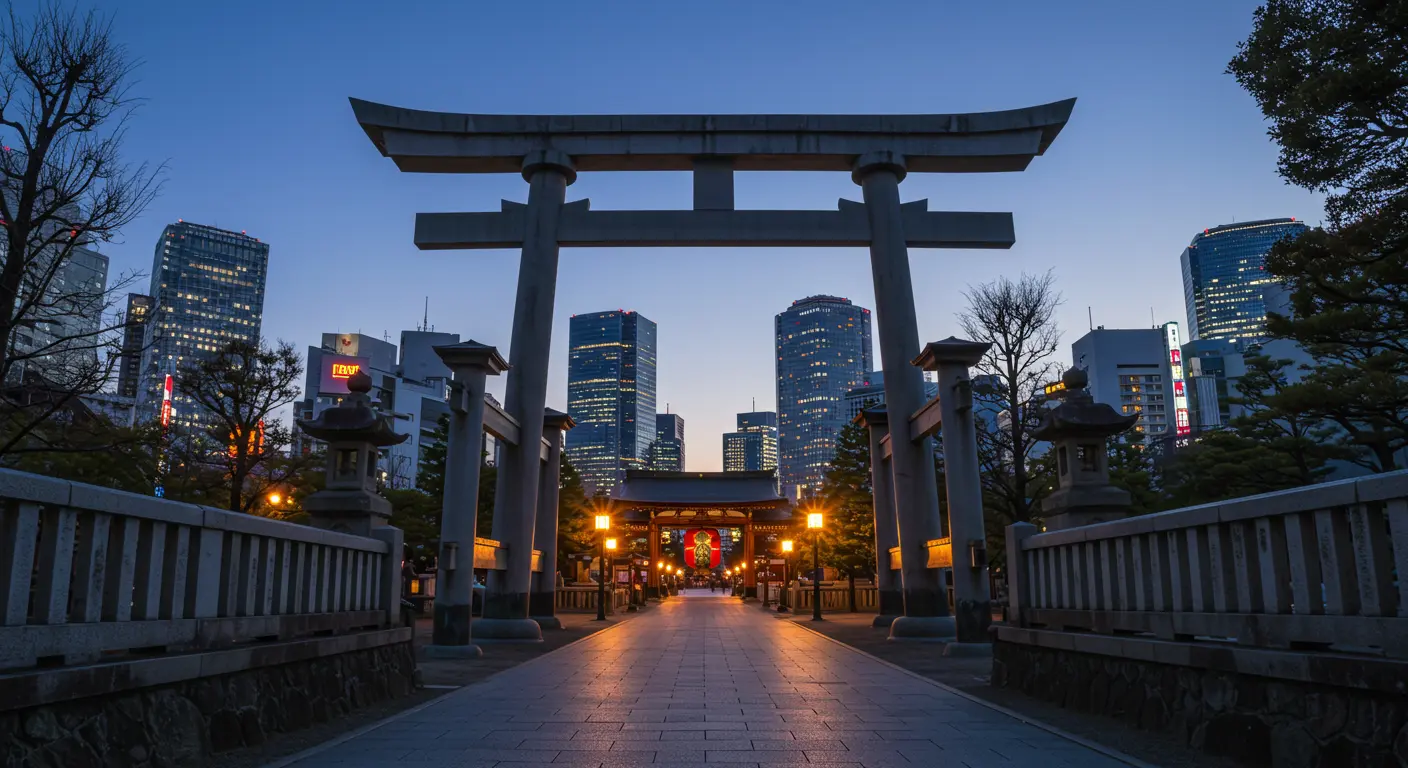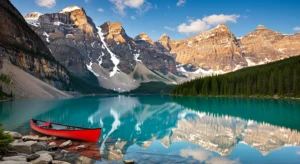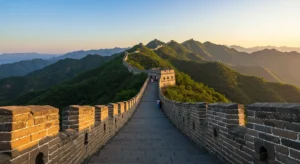Table of Contents
Your First Japan Vacation: A Beginner’s Guide to Planning the Perfect Trip
Picture this: you step out of the orderly chaos of Shinjuku Station, and it hits you all at once. The gentle hum of a thousand polite conversations. The mesmerizing dance of neon lights against a twilight sky. The scent of steaming ramen from a tiny alleyway shop. It’s a feeling that’s equal parts exhilarating and, if we’re being honest, a little overwhelming.
Planning your first trip to Japan can feel like preparing for a journey to another planet—a wonderfully safe, clean, and incredibly polite planet, but one with its own unspoken rules. You’re probably wrestling with a million questions. When should I go? How much will it cost? Do I need to speak Japanese?
Take a deep breath. You’ve come to the right place. This guide isn’t just a list of places to see; it’s your friendly roadmap to navigating the nuances of this incredible country. We’ll walk through everything step-by-step, turning that initial anxiety into pure excitement. By the end, you’ll feel confident and ready to embark on the adventure of a lifetime.
Why Japan? More Than Just Sushi and Samurai
Sure, the food is legendary and the history is rich, but a Japan vacation offers something more profound: a study in beautiful contrasts. It’s where ancient temples sit in the shadow of soaring skyscrapers. Where silent, meditative gardens are just a train ride away from the buzzing energy of the world’s busiest crosswalks. This unique blend is what captures the hearts of first-time visitors, leaving them with a sense of wonder that’s hard to find anywhere else.
Step 1: Timing is Everything – When to Book Your Japan Vacation
This might be the most important decision you make. Japan has four distinct seasons, each offering a completely different experience.
The Cherry Blossom Season (Sakura) – Late March to Early April
- The Vibe: Pure magic. The entire country seems to celebrate as delicate pink blossoms blanket the parks and riverbanks.
- The Catch: This is the peak of peak season. Flights and accommodation are at their most expensive. Popular spots are incredibly crowded. You need to book everything months in advance.
- My Take: It’s stunning, but for a first trip, the crowds can be intense. If you have your heart set on it, plan meticulously.
The Autumn Colors (Koyo) – October to November
- The Vibe: Equally breathtaking, but with a more relaxed atmosphere. The fiery reds and golds of the maple trees are a spectacular sight, especially in places like Kyoto and Nikko.
- The Catch: Also very popular, but the window is a bit longer than the cherry blossoms, spreading out the crowds.
- My Take: This is a fantastic alternative to spring. The weather is crisp and perfect for exploring.
The Shoulder Seasons – May/June & September
- The Vibe: These periods offer a great balance. May, in particular, is lovely with pleasant temperatures and lush green scenery.
- The Catch: June is the start of the rainy season (tsuyu), which can be humid with frequent showers. September is still typhoon season.
- My Take: Shoulder seasons are a smart choice for balancing good weather and slightly smaller crowds. Just pack a good rain jacket!
Winter – December to February
- The Vibe: Cold, clear, and fantastic for winter sports in Hokkaido or seeing historic towns like Kyoto with a dusting of snow. Illuminations are spectacular.
- The Catch: It can be very cold, and some rural attractions may have reduced hours.
- My Take: A great time to visit if you want to avoid crowds and don’t mind the chill. The New Year period (Jan 1-3) is a major holiday, so some businesses close.
Step 2: Crafting Your Perfect Japan Itinerary
Trying to see everything in one go is the biggest mistake a first-timer can make. Japan’s trains are fast, but distances can be deceiving. My golden rule? Less is more.
The Classic “Golden Route” for First-Timers (7-10 Days)
This route hits the essential contrasts of old and new Japan.
- Tokyo (3-4 days): Dive headfirst into the future. Explore the neon-drenched streets of Shinjuku and Shibuya, find peace in the Meiji Shrine, and witness the organized chaos of the world’s largest fish market, Toyosu.
- Hakone or Kamakura (Day Trip from Tokyo): For a taste of traditional Japan and, if you’re lucky, a view of Mount Fuji, Hakone is perfect with its hot springs (onsen) and lake views. Kamakura offers a giant Buddha and beautiful temples by the sea.
- Kyoto (3 days): The cultural heartland. Spend your days wandering through thousands of vermilion torii gates at Fushimi Inari, witnessing the beauty of Kinkaku-ji (the Golden Pavilion), and exploring the geisha district of Gion.
- Nara (Day Trip from Kyoto): Just a short train ride away, Nara is home to friendly, bowing deer and the Todai-ji Temple, which houses a colossal Buddha statue in the world’s largest wooden building.
- Osaka (1-2 days): End your trip in Japan’s kitchen. Osaka is all about eating! Don’t miss Dotonbori at night—it’s a culinary theme park.
Pro Tip: For a 7-day trip, focus on just Tokyo and Kyoto with a day trip to Nara. Rushing will only leave you exhausted.
Step 3: Navigating Like a Pro – The Japan Rail Pass Dilemma
The Japan Rail (JR) Pass has been a staple for tourists for decades, but recent price hikes have changed the game. It’s no longer an automatic buy.
- What it is: A pass that allows unlimited travel on most JR trains, including the famous Shinkansen (bullet trains), for a set number of days.
- Should YOU get one? It depends entirely on your itinerary.
- Calculate the cost. Use a tool like the one on Jorudan’s Japan Travel Guide to price out your planned long-distance train trips individually.
- If you’re following the “Golden Route” (Tokyo > Kyoto > Osaka > Hiroshima > back to Tokyo), it might still pay off.
- If you’re mostly staying in one city (like just Tokyo and day trips), it’s almost certainly not worth it. Local subway passes and IC cards (like Suica or Pasmo) are far more cost-effective for city travel.
Speaking of IC cards, get a Suica or Pasmo card as soon as you land. You can load them with cash and tap them to pay for trains, buses, and even at convenience stores and vending machines. They are unbelievably convenient.
Step 4: Embracing the Culture – Etiquette Tips to Feel at Ease
Japanese culture places a high value on harmony and respect. Knowing a few key points will make your visit smoother and more respectful.
- On Public Transport: Keep noise to a minimum. Talking on the phone is a major no-no. Trains have designated “quiet cars.”
- The Art of the Bow: A slight nod of the head is a polite gesture for thank you or excuse me. You don’t need to master a deep bow; the intention is what counts.
- Shoes On, Shoes Off: You’ll take your shoes off often—in ryokans (traditional inns), temples, and even some restaurants. Look for a step up or a row of shoes at the entrance. Slippers are often provided, but note that you should never wear slippers on tatami mat floors.
- Handling Money: You’ll often find a small tray at cash registers. Place your cash or card on the tray rather than handing it directly to the person. They will do the same when giving you change.
- Eating and Drinking: It’s perfectly acceptable to slurp your noodles! It shows you’re enjoying the meal. When drinking with a group, it’s customary to pour drinks for others, not for yourself.
Step 5: Budgeting Realistically – What Does a Japan Vacation Cost?
Japan has a reputation for being expensive, but it’s more accurate to say it offers a wide range of options.
- Accommodation: A budget business hotel or capsule hotel can cost ¥5,000-¥10,000 per night. A mid-range hotel might be ¥15,000-¥25,000. A luxury ryokan could be ¥30,000+ per person with meals.
- Food: You can eat incredibly well on a budget. A bowl of delicious ramen from a local shop is around ¥1,000. Convenience store (konbini) meals like onigiri (rice balls) and sandwiches are tasty and cost ¥200-¥500. A nice sit-down dinner could range from ¥3,000 to ¥10,000.
- Transportation: This is your biggest variable. A 7-day JR Pass is around ¥50,000. Individual Shinkansen tickets are pricey (e.g., Tokyo to Kyoto is about ¥14,000 one-way). Budget for local transport using your IC card.
A realistic daily budget for a mid-range traveler, excluding flights, could be between ¥15,000 and ¥25,000 per day.
FAQs: Your Japan Vacation Questions, Answered
Q: Do I need to speak Japanese to get around?
A: Not at all. While learning a few key phrases like “Arigatou gozaimasu” (Thank you) and “Sumimasen” (Excuse me) is greatly appreciated, you’ll find English signs in all major train stations and tourist areas. Many restaurants have picture menus or plastic food displays outside, making ordering easy. Plus, translation apps on your phone are a lifesaver!
Q: Is it difficult to find Wi-Fi?
A: Connectivity is surprisingly easy. Many convenience stores, cafes, and train stations offer free Wi-Fi. However, for seamless navigation and translation, I highly recommend renting a pocket Wi-Fi device or getting a Japanese SIM card for your phone upon arrival at the airport. It’s a game-changer.
Q: How much cash should I carry?
A: Japan is still a largely cash-based society, especially outside of big cities. While major hotels and department stores accept credit cards, many smaller restaurants, temples, and shops only take cash. It’s wise to always have a decent amount of yen on you. You can withdraw cash easily from 7-Eleven ATMs, which are foreigner-friendly.
Q: What’s the one thing I should definitely pack?
A: Comfortable walking shoes. Seriously. You will walk more than you ever have in your life. It’s the best way to discover hidden alleys and unexpected surprises.
Your Adventure Awaits
Planning your first Japan vacation might seem like a big project, but it’s one of the most rewarding trips you’ll ever take. Forget about trying to craft the “perfect” itinerary. The real magic of Japan often lies in the unplanned moments—the quiet temple you stumble upon by accident, the conversation with a friendly shopkeeper, the taste of a street food snack you’ve never seen before.
So, do your research, book your flights, and then get ready to be flexible. Embrace the unknown. Japan is a country that rewards the curious traveler. Your incredible adventure is just around the corner.




